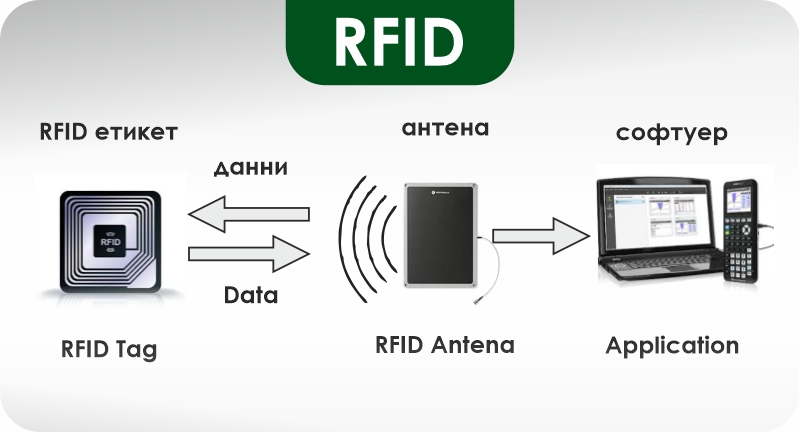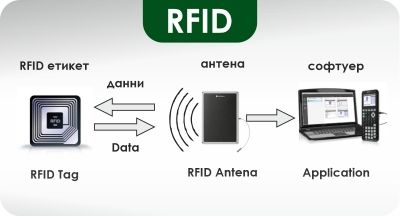Date: 26 Apr 2020
In a series of blog articles we will introduce you to RFID systems and the types of RFID labels and tags. We will also discuss their difference with barcode labels and their application in various industries.
In this blog article we will look into „What is RFID and how do RFID systems work“.

Radio Frequency Identification (RFID) is a technology that allows digital data to be repeatedly read and encoded in special labels or tags. In the industry, they are also referred to as "smart labels".
RFID labels consist of two main components - an antenna and a RFID chip (integrated circuit). The antenna is used to send power to the chip (RFID inlay). It also enables the connection between the label and the external reader or recorder. The recorded digital information is stored in the chip.
The operating frequency of the tags depends on the label application and purpose. According to this specification, smart labels can be divided into several main groups. These groups are UHFs - ultra high frequency, HF - high frequency and LF - low frequency.
Most often, the working distance that an RFID tag can be read from varies from a few centimeters to tens of meters. No matter the read range, the tag and reader do not have to be in direct line of sight.
Smart labels can also be differentiated on the basis of the working distance as NFC labels - "near field communication". The working range of NFC labels is up to 20 cm. According to the operating frequency, they are high frequency HF labels.
Most modern smartphones have a built-in module for communicating with NFC labels and tags. This phone module is also used for POS terminal payments.
RFID technology belongs to a group of technologies unified under the name of AIDC (Automatic Identification and Data Capture). These methods automatically identify objects. All the data collected is recorded directly into a computer with little to no human intervention.
RFID technology uses radio waves to transmit data. Each RFID system has three main components - smart labels, an RFID reader and antenna.
When activated, the reader sends a signal from its own antenna to the label antenna. This then activates the chip, and returns the information stored in it to the reader. The collected information is transmitted via a communication interface to a computer. There, the data is recorded in a database for analysis and processing at a later time.
Today, alongside discussion of Radio Frequency Identification, industry specialists talk about RAIN (RAdio frequency IdentificatioN). RAIN is a wireless technology that enables billions of products to connect daily to the Internet and cloud structures. This enables businesses and customers to identify, locate and authenticate each product throughout the supply chain and connect to it.
IoT (Internet of Things) is a technology that requires data exchange between the physical world and the digital world. RAIN is the ideal technology to make the connection between them at an affordable price. This technology is also part of the growing digitalization and the advancing INDUSTRY 4.0.
Read the next blog article in which we will introduce you to the types of RFID labels (active RFID tags and passive RFID tags) and their difference compared to barcode labels.
Here you will be able to find information on how to use this technology to label and identify products.
We will also discuss why it's a more functional alternative to barcode technology. You'll be able to learn the disadvantages of smart tags. Some of them are their higher cost and the impact of metals and liquids on the read range.
In the final part of this series of blog articles you'll learn more about the possible RFID applications. In it we look at how RFID solutions are used in access control systems, credit cards, asset tracking and accurate product identification.


Post comment